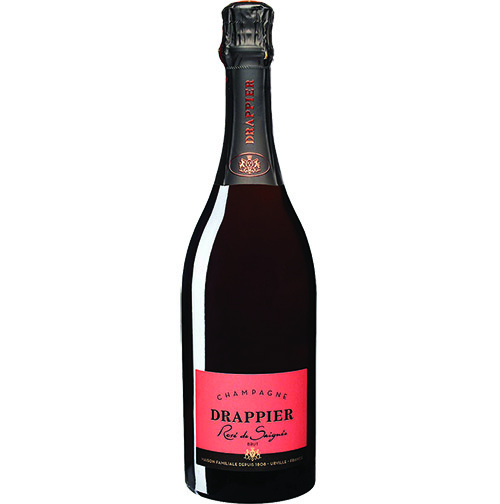







Like everyone else, we at The Jewish Link had in-person events that were canceled last week because of the rise in COVID cases. It seemed that everyone I know was waiting on results for at least one family member, and wine tasting was a lower priority than everyone’s safety. But, thank God, it appears that this variant sweeping our region is mild, and I can’t help but look forward to a time when readers can use this article in some way, perhaps to celebrate the end of a pandemic? In the meantime, our wonderful kosher wine stores offer deliveries, if my descriptions spur you to more immediate action, and the internet is also a great way to find deals on kosher wine you like as well.
The general COVID situation, of course, led to a change in the way I prepared this article about sparkling wines, because I couldn’t assemble my wine-tasting group in a traditional way. Also, since I’m not really willing to open 14 to 20 bottles of wine on my own or with one friend (thus wasting perhaps 95% of it), I haven’t tasted all the wines mentioned here recently. Luckily, however, most wines here I have tasted over the past year or so and I am confident in recommending. And in the end, I did end up opening and enjoying a few of these bottles with colleagues.
To include variety, I am recommending two straight-up Champagnes from the eponymous French region, a California sparkling wine made in the traditional French method, three proseccos (an Italian tank fermented wine that’s a little more affordable than than the French method, and still very delicious) and two Israeli bubblies, one made in the traditional French method, and one fun, artisanal pét nat (pétillant naturel), which is all the rage, and hopefully we will write more on this naturally sparkling wine style soon. (Pét nat is kind of an artisanal or small batch bubbly wine that is not made according to traditional bottle fermentation [the Champagne method] or tank fermented, like prosecco.)
The secular new year is usually a time when many bubbly wines are available, which is why I scheduled the tasting this season. But generally, since I’m not in the parsha in my life where I am heading to Times Square to watch the ball drop while enjoying an appropriately celebratory beverage, I saw this as a good time to test out wines for upcoming smachot. Bringing a bottle or two of bubbly to a small vort or celebratory meal is always a great idea and such bottles, no matter the price, rarely go unopened or unenjoyed. There is a significant price differential here, but much for those shopping in a variety of budgets to enjoy. I have sparkling wines here that retail for as high as $110 and as low as under $15. Depending on the relative importance of the occasion, it can be argued that there are appropriate times for all these price ranges.
We are very lucky in our community to have kosher versions made in some of the world’s most well-known classic Champagne houses. Drappier Champagne Rosé de Saignée Brut ($53) is one such bottle, perfect for any occasion that calls for pink champagne. My sense is if I have the choice between white and pink, I choose the pink more often for the additional fruit flavors contributed by the small amount of grape skin contact… plus it looks super-fun and extra-celebratory in the glass! Drappier’s brut nature (traditional white Champagne) and the rosé are both made from pinot noir grapes, for which Drappier is famous. In addition to the medium-size, tight-bursting bubbles, with the rosé there’s a sense of red fruit along with all the expected yeasty, bready scents typical of historic French champagne.
Similarly, the Barons de Rothschild Brut Champagne Rosé ($109.99) is, quite simply, one of the most enjoyable bubbly wines I have ever tried. This is a great wine to pair with food like fish and salads as well, or fruity desserts. It’s also the most expensive brut wine I have ever had the opportunity to enjoy, but if you have the budget for it, it’s a home run. A slender glass of this is an occasion in itself. The bottle itself also comes in a stunning gift box.
For those looking for a domestic wine, there’s nothing better than Herzog Special Reserve Méthode Champenoise Chardonnay ($50), a “California sparkling wine” that looks and feels quite a lot like traditional Champagne, but it’s famously illegal to call it that outside of the actual region. This 100% chardonnay is, instead, made from Russian River Valley grapes, which our group enjoys as a Herzog special reserve chardonnay in every vintage. Yeasty and with bigger, loud bubbles (snap, crackle, pop!), this is my newest personal favorite for all special occasions, because opening it just feels like a celebration. I have felt connected to Herzog ever since I grew up in California, and this is one of its most exciting new offerings, having been released only this past summer. It’s an easy-to-drink and delightful glass of bubbly (and it also comes in a beautiful white-and-gold tin, eminently suitable for gift-giving).
I started with the most expensive bottles since people tend to spend more for celebratory bottles, but that’s no excuse to ignore the growing cadre of affordable Italian bubbly available in the kosher world. For those looking for affordable sparkling Italian wines perfect for serving as an aperitif or a weeknight mini-celebration, I enjoyed the Festa D’Estate Prosecco Rosé ($14 exclusively on kosherwine.com). This is a great option for those who like bubbly but with a little bit of a sweeter edge and lots of notes of fruit rather than the bready yeasty notes of champagne. The regular prosecco is less sweet and similar in nature and cost to the Contessa Annalisa Collection Prosecco ($14.99), which I first tried years ago and found very enjoyable for a weeknight celebration, a girls night out or even for Shabbat kiddush. These wines are tinged with honey or sweet floral notes rather than fruit like the rosé.
Attending or throwing a party? Vera Wang Party Prosecco ($25.99) is a very classic and simple prosecco made from 100% glera grapes from Italy’s Veneto region. This fun, opaque silver bottle really comes ready-wrapped like a present for a party. We don’t get too many of these celebrity-named wines in the kosher world, but Vera Wang, a designer famous for her wedding dresses with classy, clean lines, is somewhat of an interesting choice to headline a kosher wine (mevushal, no less!). Luckily, the pale yellow bubbly (you wouldn’t know the color from looking at the silver bottle) is also fun and pleasant. It’s not too complex but we don’t always need everything to be complex, do we? Sometimes you just want to say mazel tov! It also has a very stylish, modern bottle design that will encourage people to take a second look.
For those among our readership who prefer to drink Israeli wines, these next two are for you. The Tishbi Brut Sparkling 2017 ($33) is made from 100% French colombard grapes in Binyamina, Israel. It is bottle fermented like traditional Champagne. This reliable and delicious bubbly is always impressive, with teeny-tiny bubbles. For those who want to support Israeli wineries while drinking something sparkly, there are few options better than Tishbi. In fact, the Yarden bubbly has been sold out for about six months, so this may be one of a few options.
Jezreel Valley Natural Sparkling Rosé ($28, exclusively on kosherwine.com) is a really exciting wine, which I very much enjoyed and can’t wait for others to try. It is made from Carignan grapes harvested early, which yields great color and nice acidity. The light but aggressive fizz is a product of the wine being bottled before primary fermentation is finished, so this is the very trendy super-bubbly pét nat. There are not too many kosher pét nats available, so this is a good one to start with. According to our Jewish Link Wine Guide judge Yossie Horwitz, Recanati and Hadju make good pet nats, in addition to only one of two others, but they are difficult to find and generally not available in retail stores.
For all your celebratory meals and events this season and always, we encourage everyone to enjoy these wines responsibly.
By Elizabeth Kratz













